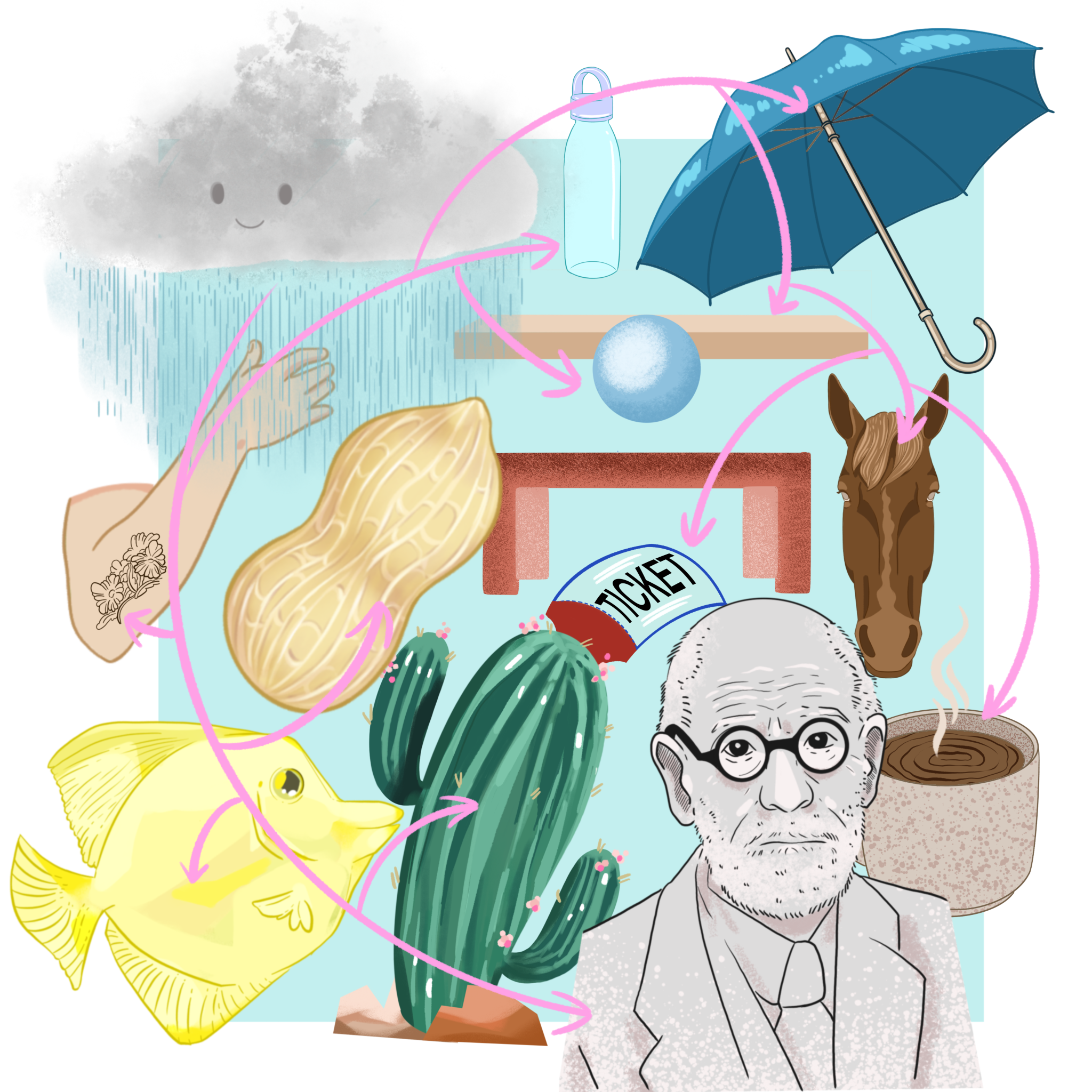22 Association Activity 3
Activity #A3: Story Method
Association through mnemonics like rhymes, acronyms, and the MOL are useful but mostly for the information you want to remember right away. A possible limitation is you could remember the acronym (like PEMDAS) but forget the new/associated information. Another pitfall is interference. For example, using your apartment for the MOL for one grocery list may interfere with the next set of grocery items you attempt to pair up with the items in your home.
The story method is another fun method for ASSOCIATION that can help remember lists of items. If we want to remember the following list of words:
HAT, RUN, FAT, BIRD, GREEN, GRANDFATHER, AIR…
I can challenge myself to come up with a little story. The challenge is in making sure the story contains every word on my list. Like this, “I see a man with a very tall hat, I call him, and he runs away but then bumps into a large, fat bird, sitting on the village green. My grandfather appears out of thin air and grabs him for me.”
The story is the right amount of association to anchor your memory for all of the words.
 Activity #A3.1
Activity #A3.1
Before you begin, note that as you read the words, you will see there is a picture associated with each one below. Visualize the word with the picture and then click on the arrow to see the next picture (to combine with the next word):
FISH, CACTUS, PEANUT, HORSE, UMBRELLA, TATTOO, BOTTLE, SHELF, FREUD, COFFEE, RAIN, TICKET, ABOVE
Now that you have connected each of the words to the images, continue to be sure you have created a story. You may want to go back through the images to look at the pictures again. There is no “right” way as long as you are considering the words and images to make a silly story of your own. It is quite possible you will have to pause and write it down.
Did your story look something like:

Association and Limitation
The association activities and previous discussions will not necessarily translate perfectly into your schoolwork. They do provide cues and tips to get you started. Here is what we know so far about how memory and association work:
1.) Connecting new knowledge with old leads to a better chance of understanding
2.) Visual cues and cues that have multiple connections or codes (using other senses) build networks of associations of memory in your brain.
3.) Visual maps and mnemonics can be good starting points for association, but when used over and over again can lead to a problem called interference.
Interference is when something gets in the way. Knowledge interference can occur when you mix up old and new information. The more times you use your apartment to recall a list of grocery items, over time, you might mix up what item you stored in what location. I used to use several mnemonics called acronyms when studying for the Psychology class in which you learn about types of mental health issues. I remember creating an acronym for 3 types of anxiety disorders: GAP (G = Generalized anxiety or worry and tension that is not related to one specific event or issue, Agoraphobia = anxiety for learning the house or going to public places, and Panic Disorder = excessive and sudden fear that leads to panic. I would do the same type of thing for the dozens of terms in the course. One limitation is that the short acronyms could begin getting mixed up with one another. An additional possibility is that I remember the phrase: GAB but do not take the time to elaborate on the actual meaning of the terms.
